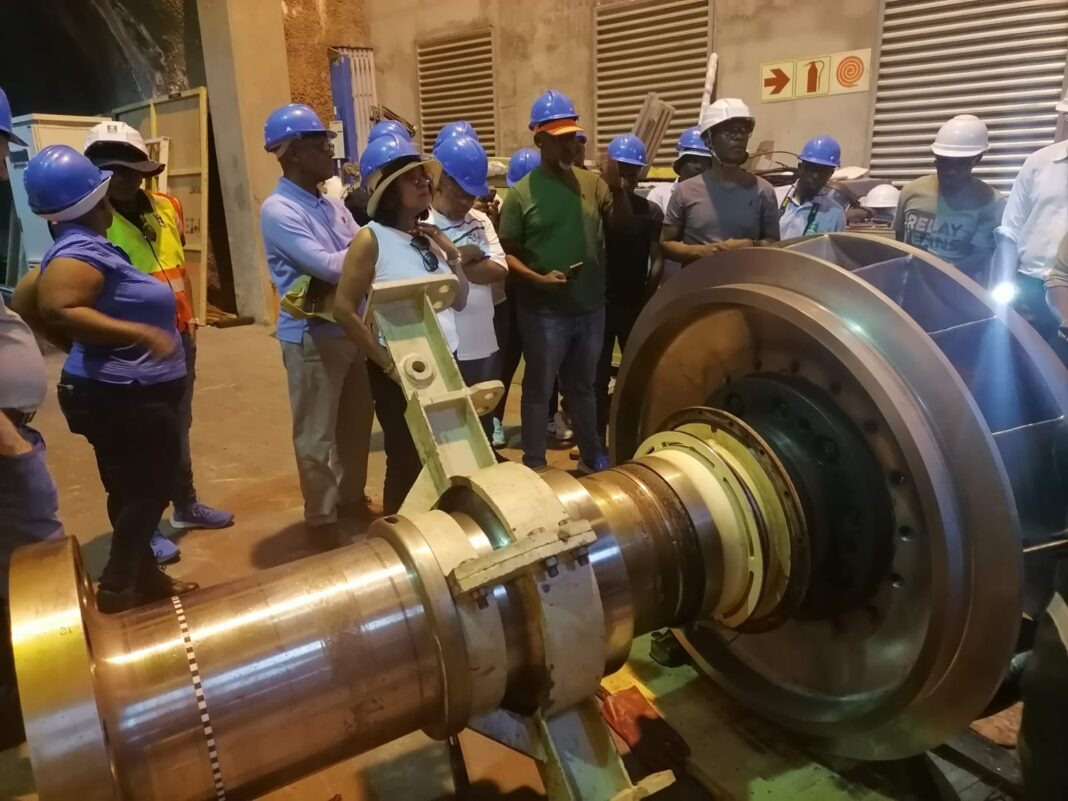Bereng Mpaki
In a bid to get first-hand experience to monitor the ongoing developments of the second phase of the Lesotho Highlands Water Project (LHWP II), the Board of Directors of the Lesotho Highlands Development Authority (LHDA) recently undertook a three-day visit to key project sites.
Led by the LHDA Chief Executive, Tente Tente, the board along with other LHDA executives and management, delved into the heart of the construction, social development programmes including compensation and resettlement of affected communities, the sustainable livelihood initiatives, and environmental activities aimed at preserving the flora and fauna found within the project areas.
“Trips like this, regular as they are, are a crucial part of our monitoring and evaluation activities as the LHDA. Having our principals here on site to appreciate first-hand the efforts that our teams are making to move the project forward, is paramount,” said Tente on the side lines of the tour.
“It is also important for them to witness some of the challenges and learnings that we as the leadership of the LHDA encounter, and helps sharpen their lens when guiding us in implementation and making strategic decisions for the project. We believe that this was a valuable trip especially during this time of busy high-activity construction works,” he added.
Witnessing transformation at Katse
The board kicked off the journey Katse, where they toured the construction site of the old Katse lodge currently undergoing a facelift. Overlooking part of the sprawling Katse reservoir, the lodge offers a truly magnificent view of the dam and surrounding areas deep in the highlands of the country.
The upgrade works aim to increase the capacity of the lodge and diversify the services offered at the facility. They include the construction of an additional accommodation block, conference rooms, a fitness centre, a caravan park, and upgrades to the backpackers’ facility.
Single quarters accommodation and parking areas will also be constructed at the Katse Village under this contract, to accommodate the Polihali Transfer Tunnel construction staff and the LHDA operations and maintenance staff, during and post construction.
Polihali North Access Road: Navigating progress
A drive through the under-construction Polihali North Access Road (NAR) revealed the expanding infrastructure, setting the tone for the scale and ambition of the project.
Also known as the A8, the NAR provides access to the Katse Dam basin between Leribe and Katse Village. The section of the road under rehabilitation starts in the Pitseng central business district and runs for approximately 98 kilometres to Katse village.
The NAR will link to the Polihali Western Access Road (PWAR) at Ha-Seshote and will provide an alternative link to the Polihali Dam basin.
The works also include the replacement of road joints at the three river bridges, repair of cracked sections with asphalt, repairs of side drains, upgrade of Mafika’ Lisiu view site, other repair works and ancillary road safety improvements.
Polihali village: A glimpse into the future
The delegation explored the newly constructed Polihali village, including visits to the lodge, school, and operations center. This segment of the visit provided a snapshot of the social development aspect of the project, highlighting the holistic approach being undertaken.
Polihali Dam and Senqu Bridge: Progress in motion
Attention then turned to the Polihali Dam construction site, offering the board a firsthand peek into the ongoing efforts. The progress of the Senqu Bridge was also scrutinised, reflecting the intricate engineering feats involved in this vast water project. The significance of the bridge in ensuring continued access and connection between communities across the Polihali reservoir when it is impounded, was a key highlight at the bridge. Senqu Bridge will span almost a kilometer in length across the dam.
The present and future of hydropower generation
The journey then took the board to the Oxbow hydropower site, where construction is yet to commence. This stop provided a forward-looking perspective, hinting at the future milestones in the pipeline and the potential to inch Lesotho closer to energy sufficiency when the station is finally built and commissioned.
From Oxbow, the tour culminated at the ‘Muela hydropower station, bringing the board full circle. This final leg offered a comprehensive overview of the station, highlighting the collective achievements and challenges, including the impending six-month outage at the station to pave the way for maintenance and repair works on the LHWP tunnel system.
The three-day sojourn not only provided the LHDA board with a deep appreciation for the progress made in Phase II but also equipped them with valuable insights crucial for informed decision-making as they steer the project through construction and towards completion of Phase II.




